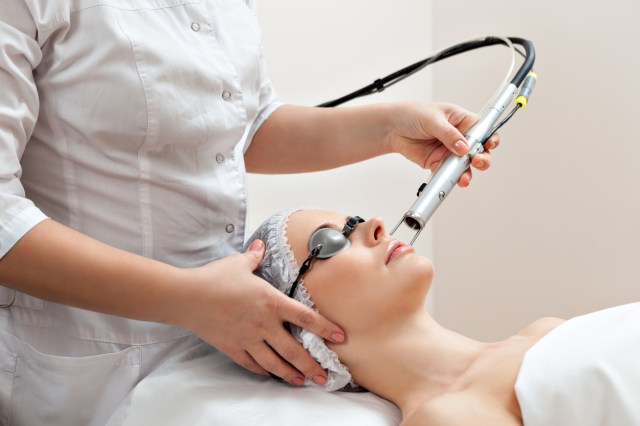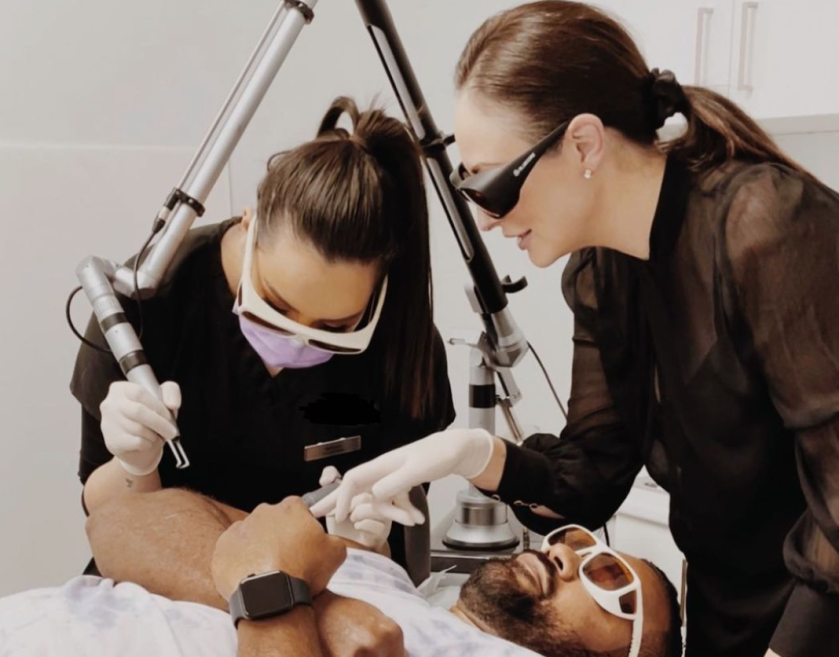Why micro-credentials may be the key to the current education gap in beauty, skin & aesthetics.
Industry employers are calling for a solution to close the gap of knowledge between beauty & dermal diplomas/degrees and the workforce. This nation-wide industry shortage has impacted businesses even before the global pandemic, with national statistics showing that the percentage of interest in starting a Diploma of Beauty Therapy has decreased noticeably, with also around 45% of current students not finishing the diploma due to the current package not aligning with their prospective aim to work in dermal therapy or aesthetics. These statistics suggest a potential gap in the current Beauty Diploma package.
Employers have stated that graduates who have completed their Diploma of Beauty Therapy still aim to seek further education specific to skin & aesthetics. Whilst a 4-year Bachelor’s Degree in Dermal Sciences may be an option, there is an increasing number of graduates who are seeking to ‘learn on the job’, or obtain micro-credential qualifications.
To discuss further on this, we sat down with the inspiring Suzanne Robertson, Co-Founder of United Institute of Aesthetics (alongside powerhouse educator and CEO, Stefanie Milla).

What gaps are you finding within the aesthetics industry when it comes to recent graduates?
Suzi: It warms my heart when I see recent graduates enter the aesthetics arena on a mission to help their clients through a journey of skin health, skin repair and skin care.
However, too often I see that confidence slowly diminish as they start to face the challenges in our industry. With the continuous rapid evolution of aesthetic treatments, devices and modalities, and the increase in demand for help with skin concerns, treatment planning is becoming somewhat of a juggling act.
Recent graduates enter the workplace often exposed to devices and equipment they’ve never used or even seen before, as well as being presented with real-life skin conditions they have not yet encountered. This combination can be an overwhelming space! Not only are therapists faced with questions around skin science and technology, but patients have a low appetite for risk, and they don’t tolerate side effects or complications well.
There are specifics that need to be investigated by the treating therapist every single time pre- treatment, during treatment and post-treatment which can be varied each time depending on the concern for treatment.
Unfortunately, graduates are not exposed to enough hands-on practice throughout their courses and study, and placements or real life work experience during study are not common in our industry, this is then compounded as more often than not, when graduates do secure a position, on-the-job training is not thorough enough.
The gap is three fold, the job readiness of graduates, insufficient on the on job training, and ongoing professional development. More attention needs to be focused on the new employee, not just in their initial learning stage, but throughout their growth as therapists. A simple increase in supervised hours in the treatment room would be a good start!
National use of Laser and IPL devices is increasing and the regulations in the industry are inconsistent from state to state. UIA trainers specialise in both practical and theoretical training with a focus on skin education, laser and light-based devices, and safety in a way that is tailored to the individuals’ needs and progressive over a period of time to give the opportunity for practice, feedback and reflection for advancement.
What in your opinion is affecting this industry shortage?
In short, the lack of regulation in our industry combined with client demand has caused a dramatic increase in the number of salons, clinics and spas nationwide. We need to service those with therapists and there are just not enough graduating or qualified therapist to go around.

Add that with the fact that our current qualifications are not reflective of what students are interested in learning – so there is a high non-completion rate in general, plus a lack of government funding which means those considering study may potentially be lacking financial assistance, and two years of covid lockdowns and you have yourself a major skills shortage!
We need a holistic solution to bring more therapists and professionals into our industry and we need adequate regulation to ensure a safe, fair and level playing field, and in my opinion mandatory professional development programs for our industry. Increasing the level of respect for our industry is the first step in bringing more students into our field.
How can clinic owners assess potential candidates thoroughly when interviewing? What common things are they missing to get to know the true person they’re interviewing?
Modern interviewing has evolved to suit the culture of our day. Sure, there is a time when you need to be clear and concise with your questioning, but if you jump straight to the hard questions, you will most likely get pre-meditated responses and your candidate will put their walls up.
Contemporary job interviews should feel like a two-way conversation because candidates now have just as many questions for the employer, combine that with the skills shortage and we have definitely seen a power shift, the employer/employee dynamics have changed and it is important for business owners and managers to adapt.

I think the most important thing to focus on first is alignment of values, more consideration needs to be given to exploring that area, as more often than not, this the reason for a lack of employee longevity within a business.
Start your interview with a chat about mutual values, goals and purpose, an open and genuine conversation can reveal more about a candidate than would a stringent line of questioning.
For those looking to upskill their existing qualifications, what main things should they look for in an education provider?
Any education provider that utilises the classic “lecture plus demonstration” style delivery of information is falling behind.

People lead busy lifestyles and in their spare time may catch themselves feeling indolent. Social media can be a constant barrage of shallow rewards that is slowly rewiring our brain to want more of a dopamine release – quick shots of interest to heighten our happy hormone.
The delivery methods of education providers need to move with the times and reflect the current style of content delivery that we are regularly exposed and are becoming used to. An engaging and interactive style learning not only enhances the reaction of students, but also increases memory retention.
Descriptive images, acronyms, flash cards and explanatory videos are more stimulating and have additional retention benefits through the brain’s learning channels. Continuous student engagement, asking questions, reflecting on learnings, and using memory recall techniques in conjunction with storytelling and humour spark the creation of new synapses whilst strengthening existing neural pathways. This type of training is more successful and valuable to the students and businesses, plus it’s way more fun!
Read SPA+CLINIC’s latest issue here:
There are 5 ways you can catch up with SPA+CLINIC
- Our quarterly print magazine, delivered to your door. Subscribe here.
- Our website, which is updated daily with its own completely unique content and breaking news.
- Our weekly newsletter – free to your inbox! Subscribe here.
- Our digital magazine – click here to view previous issues.
- Our social media – see daily updates on our Instagram, Facebook & Linkedin




